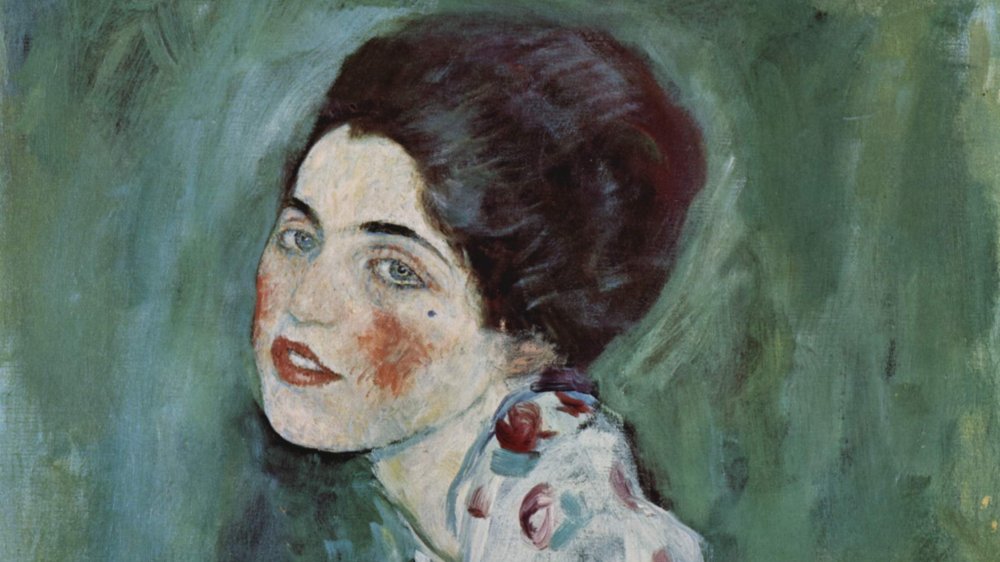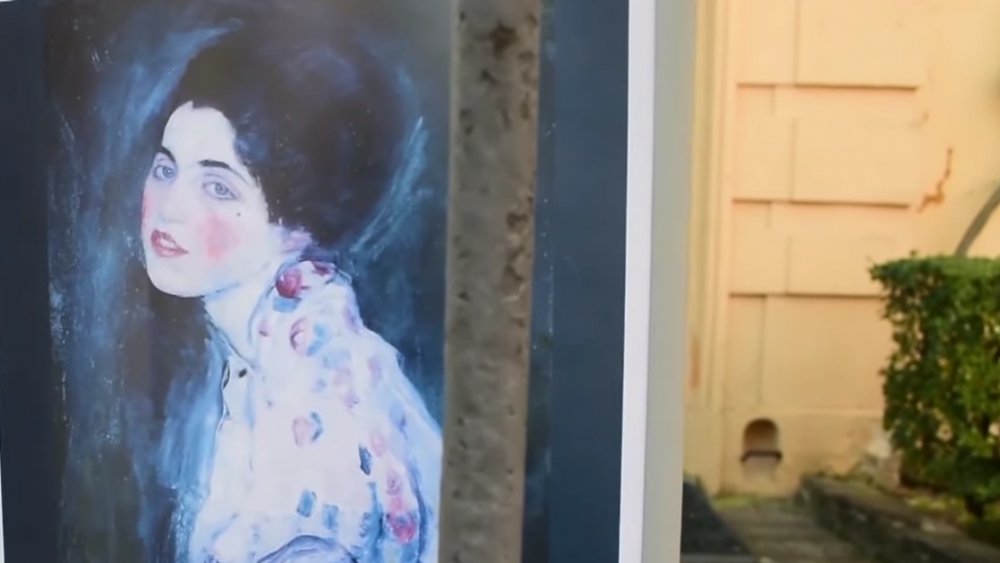Stolen Painting Found In Museum Wall Could Be Worth $100 Million
You must remember this: a kiss is just a kiss, and "The Kiss" is Gustav Klimt's most remembered masterpiece. Painted sometime between 1907 and 1908, per the BBC it depicts a man and a woman, lavishly clad in gold, holding each other as the man plants a passionate kiss. (Yes, paintings can kiss passionately). A famously sensuous artist, he was sort of the Sigmund Freud of freaky paintings and frequently painted women in suggestive poses and without clothes. Klimt shared Freud's dream of bringing sexuality to the fore in society.
After 1900, Klimt focused almost entirely on painting women. One of his subjects appeared in the generically titled "Portrait of a Lady," which Klimt completed between 1916 and 1917, per the Times of Israel. It features a brown-haired woman against a green background. Her face is a graceful contradiction, almost dead-eyed yet expressive. Whatever was written across her face, no one was able to read it once the painting vanished in February 1997. That is, until the lady turned up nearly 23 years later.
As time goes by
Prior to December 2019, the last known location of Klimt's "Portrait of a Lady" was Italy's Ricci Oddi Gallery of Modern Art. As the Times of Israel describes, the museum shut its doors to the public to have some work done, and by the time all was said and done, the painting had disappeared. No one seemed to have the faintest clue of where it ran off to or who might have stolen it. It turned out that the painting was right under their noses and inside a museum wall.
While gardeners were removing ivy, they uncovered a ventilation space. Inside was the frameless painting, wrapped in a black bag. Just like the old saying goes, one man's trash bag is another man's treasured artwork, one that could be worth an estimated $60 to $100 million. An expert confirmed the portrait's authenticity by examining it under ultraviolet and infrared light, revealing a second face under the surface which had been discovered via X-ray analysis in 1996. Prosecutor Ornella Chicca captured the gravity of the rediscovery: "It is with no small emotion that I can tell you the work is authentic."

